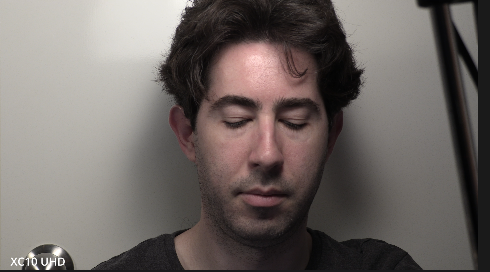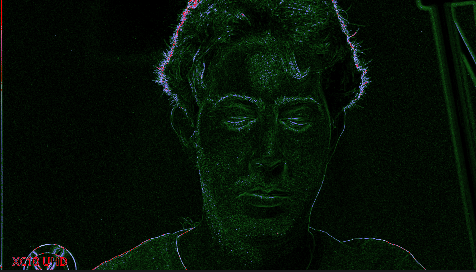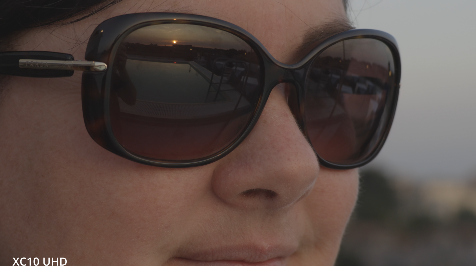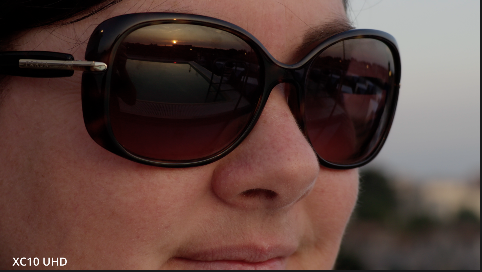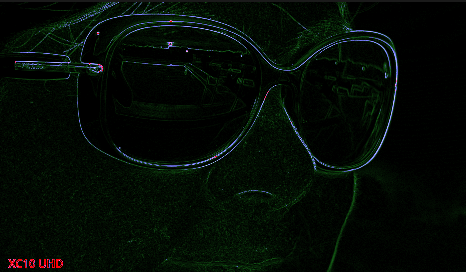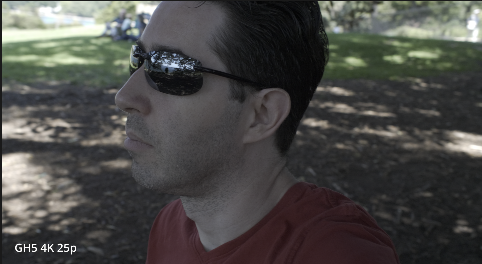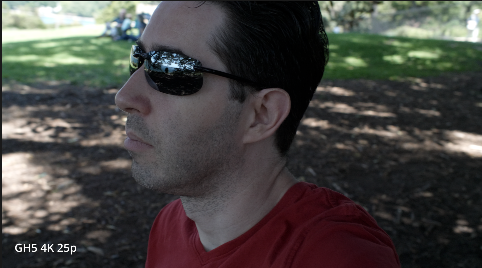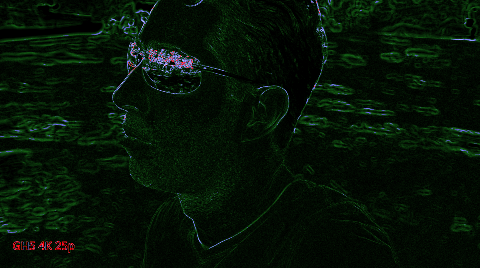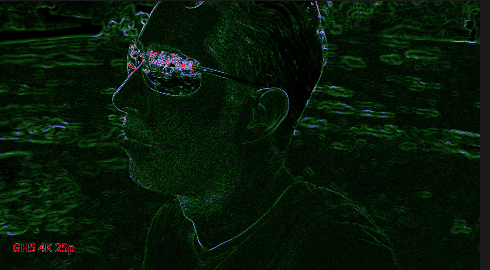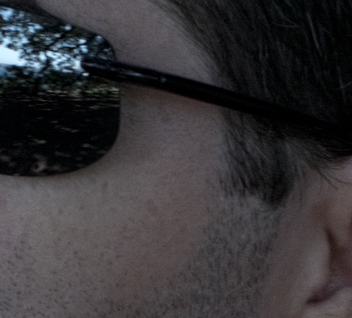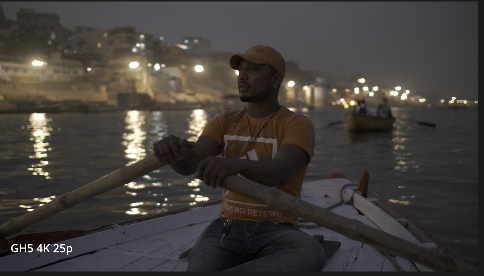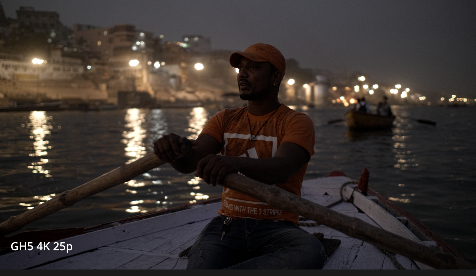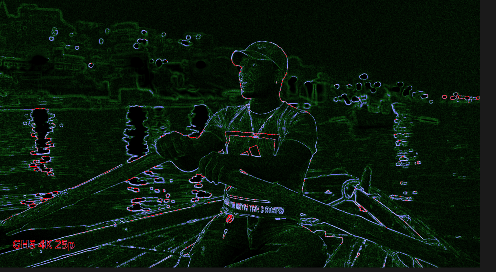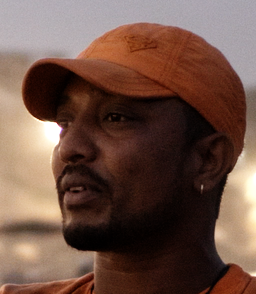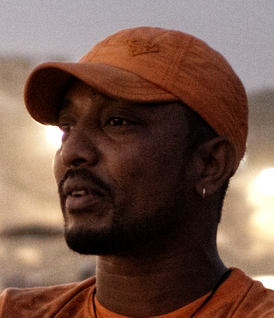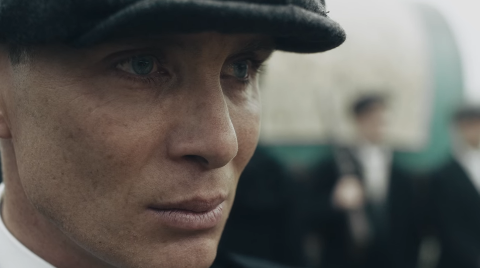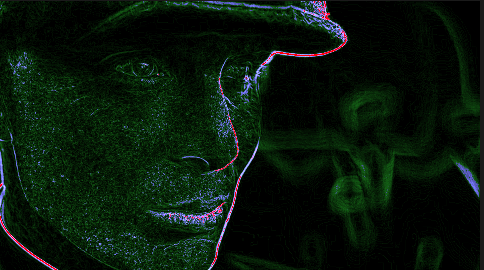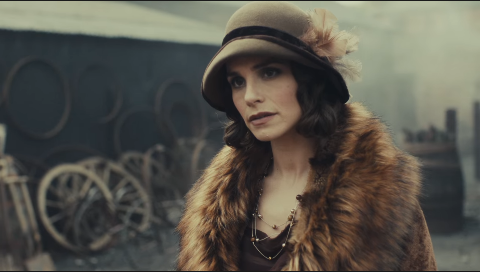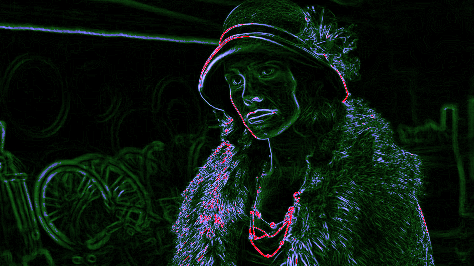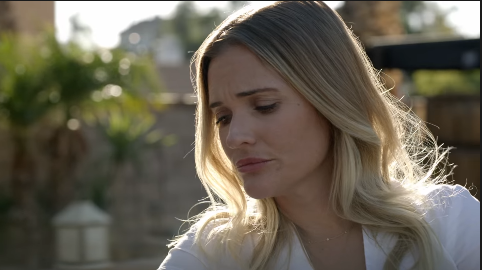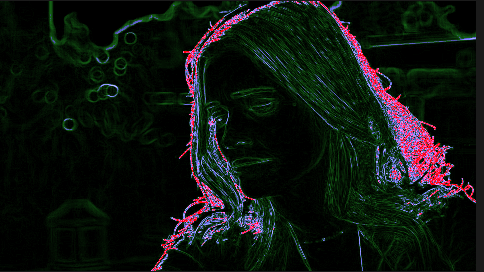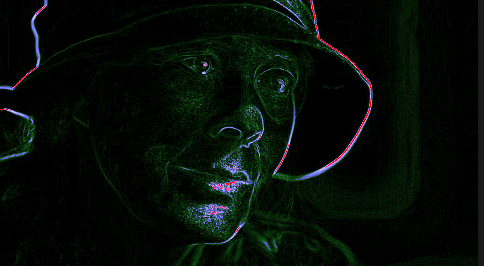-
Posts
7,835 -
Joined
-
Last visited
Content Type
Profiles
Forums
Articles
Everything posted by kye
-
As a GH5 owner, I've watched Panasonic gradually improve the colour bit-by-bit with every new camera they've released, and they've really taken it to a nice place now I must say. The GH5 still gives spectacular images, but I must say that with the colour science improvements of the newer models that the grass is getting greener. If I didn't have to spend thousands and/or buy all new glass then I'd be tempted. Of course, considering I haven't shot anything in the last 18 months due to covid, it'd be hard to justify upgrading from a camera which is ageing rather than wearing out. I bought the Voigtlander 42.5mm f0.95 and Laowa 7.5mm F2 lenses in 2019 and haven't used them on a trip yet!
-
No surprises here, but I'd say it's the Blackmagic Micro Cinema Camera. A modular cinema camera under $1000 brand new, uncompressed Cinema DNG RAW at 60p, and a beautiful image. The image doesn't look like that second generation iPhone or camcorder that Canon love to imitate when clipped either.. https://www.youtube.com/watch?v=bMb6CR781Kc With Resolve it superscales to 4K beautifully too. You don't actually want 4K, you just got trained by the camera brands that 1080 is bad because they compress the absolute living crap out of their images - no-one is rejecting the Alexa 1080p because it's not 4K! With great quality RAW images you can push and pull them in post and they keep on giving and this is pretty darn close to that... Plus it's the easiest camera to grade that I have ever seen. Great images just appear when you drop a LUT or CST onto them, rather than struggling for hours to get good colours.
-
Auto-ISO would be a tricky thing if it had to transition between LUTs, or other ISO profile adjustments, but for a cine-camera it would be a safe bet that no-one would do that, and maybe these cameras don't offer auto-ISO at all (I very much doubt the Alexa would). Certainly, cinematographers pay a lot of attention to how a camera reacts when under or over exposed, and the relative differences are very subtle, so if they did make custom profiles that evened out the response it would be a meaningful thing that people pay attention to.
-
Interesting to see, and makes me wonder if the next step would be for camera manufacturers to implement a custom LUT for each ISO setting, which would get rid of the green in those high ISOs. I've dealt with footage that was underexposed and had colour that looked like that and let's just say it's not fun to try and fix in post. I think I was about half-way to getting a physical reaction from that footage just thinking about trying to fix it in post!
-
I agree. Of course, a 2-year old is practically the same as extreme sports for an AF system! Especially if it's indoors under artificial lighting where ISO performance comes into play. I just hope we're not contributing that much to that marketing purposes. After all, "we need AF because the internet is full of people saying that the market wants AF" would be a pretty logical outcome of "I commented on the forums that the market wants AF because that's all that seems to be talked about". Personally, I think the less we talk about how we "need 4K" or "need AF" or Whatever-T-F the manufacturers are pedalling this month, the better. I'd rather not be part of the problem, and I suspect that a bunch of people hanging out and saying things because they think that's what everyone else wants is a pretty good way to play right into the GAS issues. After all, what role do forums like this play? New people want a "big camera" to get "blurry backgrounds" and forums like this teach them it's called "bokeh" and that they need 4K and FF and AF etc, so then they go and buy that Sony FF camera and there you go - the market has spoken, unfortunately it said what we told it to say by talking about how all these things are "needed", which mostly just isn't true.
-
You make fair points, but then ask why the discussion is so binary - just look at the statement you make above. What is fascinating is that you use the word reliable - no camera has a reliable AF system. None. There are literally no cameras available on earth that you could use to 100% get the AF right. The GH5 isn't 100%, but neither is the Sony A7S3, or the Canon R5 either. I've seen multiple shots in recent vlogs where the camera focuses on the background, or on the foreground, or just stops, and these are shots that are making it into the final edit. Think of how many out of focus shots the GH5 created and how few ended up in the edits of YouTubers, then apply that to the PDAF/DPAF cameras and so even they are screwing up on a semi-regular basis. The GH5 was a roaring success without good AF, and lots of people buy it, even now, despite the millions (billions?) of comments online about how the AF is not reliable. Would the GH6 be a better selling camera if it had PDAF? Absolutely. Will PDAF give it "a good and reliablish AF system"? Hell no. Does it "need" a "reliable" AF system? No, because such a thing doesn't exist.
-
The challenge is that the camera must know who to focus on and when. This is essentially an impossible thing, especially for narrative. Imagine a shot with a composition like this, but where only one character is in focus at a time: The background character starts in focus... BG: You've screwed everything up....... I can never trust you again pause FG: I'm sorry When should the AF change focus from the BG character to the FG character? The answer is, it depends on the director. It could change during the pause in 1, before 2, after 2, in reaction to 3, or not at all. If the answer is anything before 3 starts speaking then how the hell could a camera know that this was the moment to transition focus???? This is the fundamental challenge of AF. Anyone who doesn't understand this doesn't understand how to use focus as a creative tool in a film. Lots of people don't need to know this of course, but I find that even in making videos of my family this stuff becomes relevant, which is hardly the pinnacle of the art form.
-
I just substitute the phrase "robot that doesn't know the foreground from the background" whenever I read AF. It makes phrases like "The GH6 won't be successful until it has the DPAF from Canon or PDAF from Sony" sound ridiculous, but also more accurate: "The GH6 won't be successful until it has the Dual Pixel robot that doesn't know the foreground from the background from Canon or Phase Detect robot that doesn't know the foreground from the background from Sony" I think most people here that talk about AF are either wedding shooters thinking that their films will be better if they can get shallow DOF on their circling-the-couple-gimbal-shot (they won't be) or tech nerds that don't shoot at all. I came on this board thinking that Canon colour science was the best, 4K was required to get a good image, and that AF was a critical feature. Now I know that most of the manufacturers have great colour science, but that magic is created on-set and in post not in the cameras internal LUTs (even if it's an ARRI), I shoot manual focus, I shoot 1080p, and I think possibly the largest weakness in current cameras for image quality is dynamic range. How did I progress on that journey? I shot stuff and looked at it and worked out how to make it look better. I learned about what actually makes a nice image vs just reading the marketing BS that manufacturers spew at us constantly. Guess why? Older cameras can potentially make nicer images than newer ones - no wonder that's not on the marketing talking points!
-
I won't be. I use manual lenses and although my ability to manually focus doesn't track subjects with the same accuracy, I have never ever ever mistakenly focused on the background instead of the subject. I also film in the real world where my subject is surrounded by other faces and objects that there's no way the camera could distinguish between. Little pocket cameras have the ability to set VIPs and actually take photos of the people you want it to focus on and they will detect faces and then analyse them for the VIPs, and be sure to focus on the VIPs instead of the other random people of less importance. I don't have that option on any interchangeable lens camera I own, so there's no way that the camera can tell who I know and who I don't. Then there's situations like this - how well do you think face-detect is going to work here? Sure, PDAF with face-detection is great for vloggers against a plain background, and it's great if you're shooting a wedding on a gimbal as a one-person operator, but for more complicated stuff it's still a very long way from solving the AF issue. Besides, why settle for second best? My P2K, M2K, and GH5 have the same focusing system as an Alexa 🙂
-
Interesting test, but that shot at 0:11s really falls apart... not sure if it's the compression or what, but the right-hand edge of the figures practically fades in over a few frames as they walk in front of the background. Maybe have a look at the A7Sii videos people did in ultra low light and see how they got the results they got. IIRC they also used faster lenses.
-
It looked like the foam cover on it was on the large side, which would cushion it if it moved around a bit, so that's worth paying attention to as well. ADR is an option, but it can be pretty fiddly to do and if you haven't done it before it's not as easy as it might seem, especially for some talent.
-
What was it about the camera / footage that you didn't like?
-
The XC10 - the bane of my introduction to colour grading. I could never get the footage to look good, and now I finally realise why. Long story short, it's a cinema camera with a slow zoom lens, so you have to use it fully-manual, and I didn't. What that means is that if you put a scene in front of it that is within a few stops of correct exposure then it will look fine, but if not then it will either drown the image in ISO noise, or will hit its fastest shutter-speed (which being a cine camera isn't that fast) and will then stop down the lens, which was slow to begin with, and introduce diffraction. These are why most of the images I have from it look like poor quality JPG images, and sharpening them just makes them look awful, not sharper. OK, I'll move past that and let's move on to what it looks like from the few shots I have that look good..... This is a test shot from when I first got the camera, it's SOOC so I suspect it's a 709 profile: and here's the analysis: Seems reasonable. What about C-Log? This is SOOC: As usual, the CST created a neon abstract painting out of the skin tones, but with saturation at 60%, we get something reasonable: and the analysis: All good too. Soft skin, but close-up and with direct sunlight, gives some green. <long sections complaining about the camera deleted lol>
-
I've gone through and reviewed the shots I pulled from my back catalog and got some interesting results. Let's start with the GH5 in UHD 24p, on a 1080p timeline. (In order to sharpen you have to have something to work with, so I'll be talking about how good the codec is, you'll see why later on...) Take a shot like this, SOOC: Apply a CST and maybe some level adjustments if it needs it, and we get: and this is what the analysis looks like: This looks very similar to what we saw from the streamed reference images. The stubble but softened light gives a bit of green but not a strong amount. We can apply some sharpening and get this: and a 100% crop of the 1080p timeline: But that's in relatively good lighting conditions, how about under tricky situations? This is an image of dark skin tones, on a boat with no lighting on a river perhaps 50-70m from shore where the floodlights are lighting up the festivities. It was taken with the Voigtlander 17.5mm wide open (these lenses are known for being soft wide open) and the GH5 in auto-ISO mode, so who knows what the ISO was... This was my first trip with the GH5 and the Voigtlander and I had no idea what I was doing, and if memory serves, I think I was exposing to protect the highlights in the background!! Image SOOC: The standard CST does this, which is radically underexposed: But if we apply a ridiculous exposure adjustment we get this, which doesn't look good but will serve our purposes to look at sharpening: and this is the analysis: Note the green areas on the face are not just random noise - there is detail there. I reviewed successive frames and it is indeed detail. This is a 100% crop without any sharpening, just so you can see what detail is there: and with the sharpening I applied before, we get: It's worth pointing out at this point that these are from the 150Mbps Long-GOP UHD mode, not the 400Mbps ALL-I one. The GH5 earns its reputation once again. Now, let's change gear and talk about the XC10. Remember I said that we'd be talking about codecs for a reason? Well......
-
I didn't realise there were PDFs - that might be worth a look. I've commented before elsewhere that it's tricky once you know half a program because you probably won't get the overall structure / rationale of it from continuing to learn bit-by-bit but that watching videos that are mostly filled with things you already know is almost unbearably tedious. PDFs however, might be useful as you can scroll and go at your own pace. As an aside, I didn't realise until recently how useful the speed controls are in YouTube - watching something you're broadly familiar with in 1.5x or 2x speed can be refreshing as you can still follow it but it skips along nicely and doesn't seem to drag. It's definitely worth drawing attention to the training. Lots more people are moving to Resolve it seems, and the free offering is very capable. I definitely agree about architecture, which is not easy to learn if you're teaching yourself bit-by-bit. In terms of learning how to colour, you're right that they won't teach you that, and many colourist resources also won't. I started a thread some time ago to try and collect useful things, it's here: In the same way that learning bit-by-bit won't teach you the architecture of a thing, lots of good colourist content also doesn't teach you the overall mindset and approach for colour grading. If you're interested in a training course that I did recently that was absolutely spectacular, I can heartily recommend the masterclass by Walter Volpatto who works at Company3. The class was streamed some time ago but you can buy the download. I re-watched it recently and was blown away by how deep Walters knowledge was, and how he went another level up again from most colourist content by talking about workflow and how to manage large projects. He took great pleasure in occasionally roasting the colourists on YT, making serious criticisms of even the advice given by the top YT colourists who are obviously working pros, let alone the "buy my LUT" crowd who couldn't even spell LUT 2 days before they launched their own line.
-
I've watched some of their videos in the past and found them very good. They're quite slow, considering they cover everything and don't assume prior knowledge, but are very thorough. What is especially valuable, and you almost can't get anywhere else, is that they give you hints of how they designed Resolve to work and the architecture of it all. If you have the time and patience then watching the videos might be good value. Not sure what value certification would give you unless you're a pro looking for work though, and you're likely to have to re-certify every new version.
-
I've gradually worked my way "up" from cameras that applied too much sharpening to less and less. Typically they applied too much and so I got a bit familiar with blurring the image to soften it to get it to a good look. Now I own cameras that shoot in 1080p RAW and look completely silly without sharpening, and I realise I know very little about how to do that. Interestingly, there aren't many tutorials around going through how to do it, even the basics aren't covered well. Unlike topics such as how to apply a LUT, but I digress. So, this thread is about me learning to apply sharpening, sharing what I find, and maybe getting some hints from others. I've been taking screen captures from TV shows and movies as references for a long time (always a good thing to have when colour grading) and I thought I'd start by analysing these images first, then seeing what levels of sharpening come with the various cameras I have. I've compiled a bunch of source footage from my projects over the years as references. So, here's how it works.. I put a bunch of images onto a 1080p timeline, and then by some Resolve trickery, we can highlight areas of strong edges in red, medium strength edges in blue, and weak edges in green. Happy to describe the node tree if anyone is curious, but it turns images like this: Into outputs like this: I've looked at a range of images from Peaky Blinders, Chefs Table, S.W.A.T. and Unabom and they all appear to have similar levels of sharpening. For images where there is very harsh lighting and/or strong detail on faces (such as facial hair) the face texture just dips into the blue, but is green. For images that are softly lit and are of female leads who are meant to appear with smoother skin those areas of skin don't get any green highlighting, such as this: or this: but other than those things, people tend to get green highlights on the lighter areas of skin and not in the shadow areas, and blue on specular highlights: Now to analyse my images. I'm looking at footage shot on XC10 in 4K, GH5 in 1080 120p, 4k60, 4k25, and 5k25, iPhone 4k60 and 4k25, Sony X3000 4k25, and BMMCC/BMPCC 1080p RAW or Prores HQ. More to come.
-
I used to be into hifi and buying exotic valves and one of the stores that sold old valves started selling jewellery as well. Lots of hifi guys aren't the type to really understand women so maybe wouldn't know where to start and (maybe out of guilt / obligation) would just shop there as it was easy and they were already signed up etc. I have no idea how much they sold, but they still have a section of the site dedicated to it and their selection seems to have expanded! Maybe combine things? "There's a shortage of food, therefore prices have gone right up, that's why your car is missing AND I've brought less food home lately and the cupboards are bare. Oh, and BTW, people are getting desperate out there, so better to not go outside and see for yourself...."
-
I've found that normally the best display for someone to judge something on is the one they're used to the most. The best display in the world won't be a good reference if it's different to what you're used to. The argument that no-one is viewing things using a calibrated display is very common, but is ultimately a very strange idea. Chefs know that food tastes different to everyone, but they don't go around saying that there's no point making the food taste good to them because people eat their food with uncalibrated mouths. Musicians don't go around saying that there's no point practicing their instruments because people hear music through their own cultural reference and taste. I'l go first with a camera guess. Sony. The reason that I think it's a Sony is because 1) the first image look relatively good, and 2) the fact you're asking suggests to me that the camera isn't one that is expected to have good colour. No-one posts images from an Alexa and then is keen to hear what camera they shot it with.
-
Interesting survey, although hardly surprising results coming from a site with "economics" in the name. I've been doing an interesting survey for more than two decades where I ask senior management about talent and the overall state of the workforce. The result? Every leader that ever commented to me said they have very serious difficulty hiring people with leadership ability. A decent percentage volunteered that they've had to change their approach to organising, even restructuring, to work with the leadership pool they have. I've detected no change in this over the years. In business, everything eventually gets traced back to people, then to management, then to external forces, then to those people, and eventually to the human condition itself. The more things change, the more they stay the same, and the longer you look the more this becomes clear. And if you think that COVID is an exception, go read about the Spanish Flu.... it makes covid look like a head-cold in comparison.
-
I'd be curious to hear how many people commenting in this thread have calibrated displays and are viewing in controlled lighting conditions. When comparing images with no reference (except pure aesthetic reaction and visual memory) these things factor in hugely.
-
That sounds like it! Anyone who has recorded sports in 120p (or more) and then had to review the footage in post will know that slow-motion is no joke... for every second of 120p you watch at 24p, you get 4 seconds further behind!
-
I'm having deja-vu as I swear someone has asked this question before, and it made no sense then or now. What are you trying to achieve? and how is this not achieved by shooting 24p with a short shutter speed?
-
@EphraimP I definitely prefer A as it's warmer and colours have more clarity and fullness. B is cooler and so the neutral tones in the background and lack of saturation in the skin tones make it look more hollow and like the guy is in poor health. If it's meant to be in neutral lighting and the guy in good health then B looks like someone has used the wrong colour space transform. Having said that, you haven't said what the film is about, and "nice" doesn't work well for horror or action or many other genres, so the aesthetic should dictate the look...





